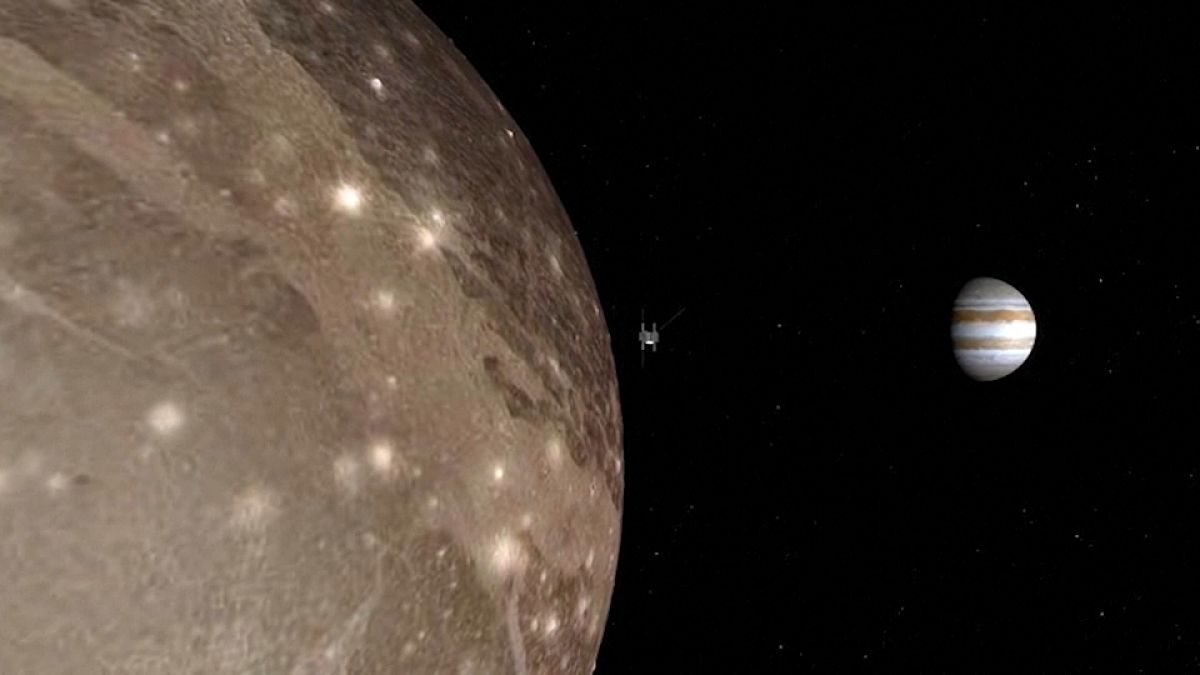A mission by the European Space agency to discover the secrets of three of Jupiter’s ice-crusted moons was postponed on Thursday.
The launch of Europe's JUICE spacecraft to Jupiter, which was originally scheduled for Thursday aboard an Ariane 5 rocket, has been postponed until Friday due to poor weather conditions.
The liftoff, scheduled for 12.45 pm GMT (1.45 pm CET) from the European spaceport of Kourou in French Guiana, was postponed because of a "weather red flag," namely the risk of lightning, the European Space Agency (ESA) and Arianespace said.
The next attempt will take place in 24 hours, at the same time as planned on Thursday, the ESA said.
The postponement was announced just minutes before the final countdown from the Jupiter control room where several personalities were gathered, including King Philippe of Belgium and French astronaut Thomas Pesquet.
A few kilometres away, the Ariane 5 launcher, whose penultimate flight this will be, is installed on its launch pad, ready to propel itself with the six-tonne probe loaded in its nose cone.
ESA's mission to Jupiter
ESA's flagship mission, JUICE (an acronym for Jupiter Icy Moons Explorer), will explore Jupiter and its icy moons in search of habitable environments for extraterrestrial life forms.
Once it launches, it will travel more than 884 million km to fly past Jupiter and its ice-encrusted moons, Calisto, Europa, and Ganymede. The journey is scheduled to last eight years.
When it reaches orbit around 2031, the craft will unfurl ten giant solar panels and a boom pole carrying instruments to measure elements of its surroundings.
Then it will spend several years orbiting Ganymede which has sparked the most interest among space scientists at ESA.
Dr Caroline Harper, the Head of Space Science at the UK Space Agency, believes it will confirm the existence of salty oceans beneath the surface of Ganymede.
"JUICE is not in itself designed to look for life on an icy moon, but if we’re going to find life elsewhere in the solar system, chances are it’s going to be underneath the ice, if there is an ocean, underneath the ice on one of those moons," she said.
"So it’s going to be very exciting to look and see whether we do find what we expect to find, whether there are salty oceans under the icy crust that could contain the conditions that support life".
This is the first time that Europe has set off for a planet in the outer solar system, starting after Mars.
The €1.6 billion launch of JUICE comes at a time of crisis for Europe's launchers, which have been virtually deprived of autonomous access to space after the departure of Russian Soyuz rockets from Kourou, the cumulative delays of Ariane 6 and the failure of the first commercial flight of Vega C.



